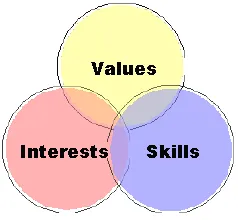How I Used LinkedIn to Get a Hiring Manager’s Attention
Part one of a two-part series written by guest blogger Dr. Phil Ryan, Director of Student Services at the Office of Intramural Training and Education.
I am in an enviable position because I love my job. Regardless, we should all be looking forward in our career and thinking about what the next step entails. While I am not actively pursuing new positions, every now and then a job posting comes to my attention and piques my interest. I am sure many of you have had a similar experience. Usually the scenario goes like this: you see the job title and it sounds like something that really interests you. Next, you click on the posting and read the job description and you really love what you are reading. Then, you scroll down to the qualifications section and your heart sinks a little bit. The degree and field in the education section does not match your own. The position description lists years of experience that you don’t have on your resume and the wording they use does not match any of the official titles you can list on your resume.
The truth is if you submitted your resume through the normal channels, it would not get forwarded on to the hiring manager for them to review. But, you feel certain you can do that job, do it well and really enjoy it. This experience recently happened to me and I want to share how I used LinkedIn to overcome some of these barriers in order to grab the attention of the hiring manager before I ever submitted my application.
Step 1: Get Prepared
The first thing I did was find the Web page for the department in which this position was located. In many job postings it will list the title of the person that position reports to. Sometimes, it just lists the department the position will be in. Either way, with a little searching online you can often find the director of that office or department. After I found the director of the office in which this position was located, I looked him up on LinkedIn and searched the Internet for other information on him. I found a couple articles he had written and I read them.
Then, I changed and updated my LinkedIn profile. This is one of the benefits of LinkedIn. On a resume it is hard to stray from your official titles for a position. But in the experience section of your LinkedIn profile you can highlight the activities you are involved in even if they aren’t a part of your official job. You can also include links to your projects available online, or to Web pages of organizations or events you have been a part of. You can highlight whatever projects you want to highlight in the Projects section. Most importantly, your summary can be used to clearly communicate what it is you are passionate about.
Step 2: Reach Out
Once my profile was updated and organized to make me look like a great candidate, I sent the director a request to connect. It read something like this:
“Dear Mr. Director, I am interested in the position of [position title] in your office. I have read a couple pieces you have published and really like your take on [field]. I hope we can link in to share resources and network.”
Notice that I offered up another reason for him to accept my invitation other than to discuss the position. It’s important to realize that my offer of sharing resources and networking was sincere. Even if we were not able to discuss the position, I was making a connection in a field of interest to me professionally.
Within three days we were talking on the phone about the position, the field in general, and our respective career paths. I had not even submitted my application and I was basically having a pre-interview! At the end of our conversation, he encouraged me to submit my application. Within a week of my LinkedIn request, I was on Skype interviewing with the entire hiring committee and was later flown out for an in-person interview. As a career development professional, I had to ask if my application would have made it to his desk had I not contacted him through LinkedIn. He would not go so far as to say “no,” but he certainly did not say “yes.”
The end result was I was offered the position. After careful consideration, I respectfully declined to accept the job. Why? Well, that is to be continued in another blog post….



